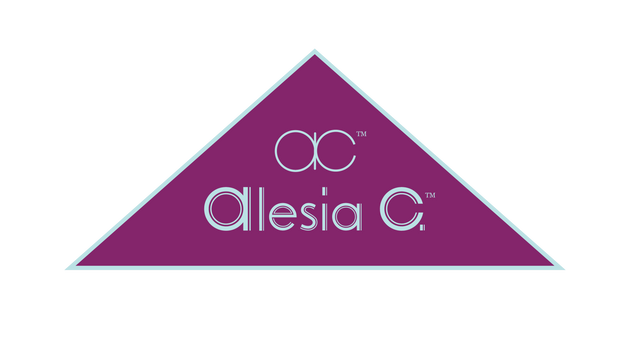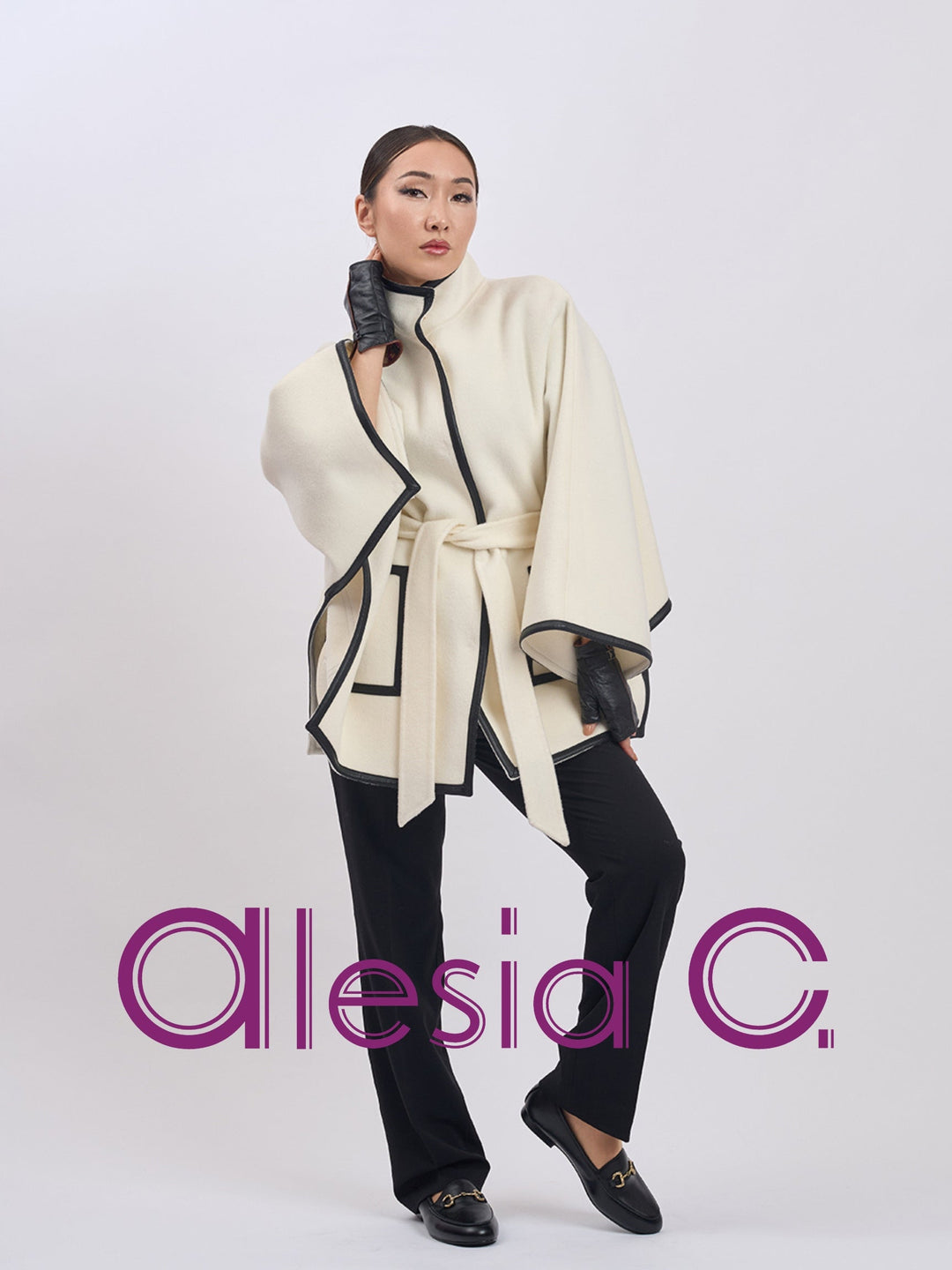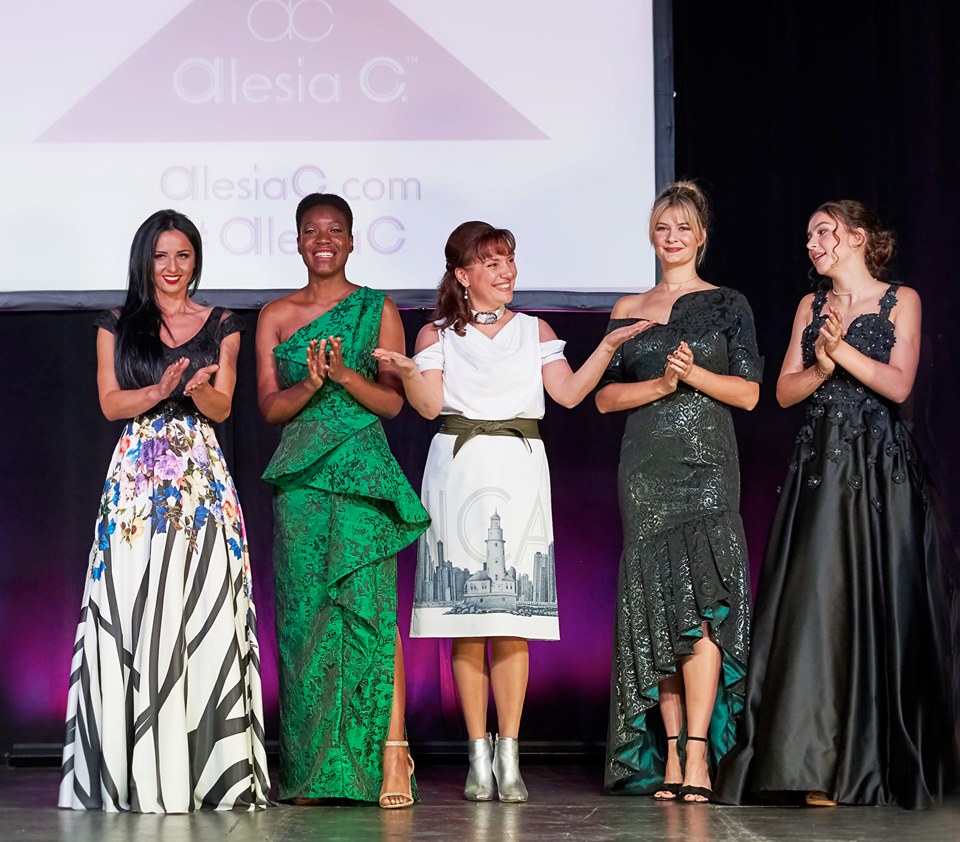Bringing Art-A-Porte to the Stage: Alesia Chaika 2019 Fashion Show at the Ultimate Women’s Expo Chicago

In 2019, I carried my canvases out of the studio and onto a stage—quite literally. At the Ultimate Women’s Expo Chicago, held at the Donald E. Stephens Convention Center in Rosemont, I unveiled an Art-A-Porte runway that brought my worlds of painting and couture together in front of a vibrant, multi-generational audience. It was a celebration of beauty, fashion, and style—woven from silk, shaped in couture, and lifted by the stories painted into every print.

I still remember the feeling of stepping behind the curtain that morning. Backstage hummed with the music of zippers and laughter, quick steam bursts from a garment wand, the soft clink of scarf rings, and the murmured count of runway cues. My models were already “in conversation” with the pieces they would wear—draping, tying, and rehearsing how a flourish of silk could punctuate a moment. On a nearby rack, my Art-A-Porte silk scarves—pure silk squares and long bands—glowed in saturated color: peonies and lilies, celestial geometry and city angles, the language of line and light that I first spoke on canvas. Nearby hung my Wearable Art Dresses—modern silhouettes carrying exclusive prints derived from my original paintings—and a small constellation of bridal couture and evening gowns, designed to float like a whispered promise.

This is the essence of Art-A-Porte: I paint first. I stand in front of a canvas with brushes and pigments and questions—and from that fine-art origin, I translate the work into textile, silhouette, and finish. The runway becomes a gallery in motion, and the women who wear my designs become the curators of their own stories.


Why the Ultimate Women’s Expo?
The Expo is a meeting place for energy—women gathering to explore what’s new, what’s beautiful, and what’s possible. Entrepreneurs, artists, wellness innovators, community leaders—everyone collides here in the best way. Presenting at this show allowed me to share not just finished garments but the creative process behind them: painting, scanning, scaling, color proofing, print placement, cutting, and the couture techniques that give each piece longevity. Many in the audience had never watched a runway where models carried original artwork in their hands as they walked. I love that moment—the realization that the dress isn’t merely inspired by a painting; it is the painting’s second life.

The Runway Story: From Canvas to Couture
We opened with silk. My Art-A-Porte scarves entered first—pure silk twill and satin, edges hand-finished with a fine rolled hem, prints placed intentionally so that a single fold could reveal a petal, a skyline, or the exact pulse of a brushstroke. Each look was styled two ways: the first pass showcased a classic knot, a shoulder drape, or a rakish necktie; the second pass layered the same scarf as a bodice wrap, a belt accent, or a headscarf anchored with a jewelry-like ring. I design scarves as a living medium—portable paintings—so demonstrating their versatility felt essential. You could hear the audience soften into a collective “ohhh” when a single square transformed from neck adornment to an elegant halter overlay.

Then came the Wearable Art Dresses. These are the pieces where print placement becomes architecture. If you’ve ever painted a canvas, you know how carefully you plan the light. The same is true with textile—except the canvas now moves. I map the artwork onto each panel so a stem aligns with a seam, a horizon runs cleanly across a hem, and a burst of color lands exactly at the heartline. On the runway, a knee-length sheath in midnight blue carried a constellation of paint splashes like meteor trails; a flowing A-line dress placed a peony’s bloom so it appeared to open as the model walked; and a structured collared shift featured a grid of abstract brushstrokes echoing Chicago’s architectural rhythm.




I asked the models to pause mid-runway and turn slowly, letting the audience watch how the print followed the curve of shoulder and hip. That is my favorite choreography: quiet enough to let the fabric speak, precise enough to honor the artwork’s composition.



Bridal and Evening: The Poetry of Detail
The bridal couture and evening gowns formed our finale—silhouettes that carried a more formal volume yet stayed true to my painterly instincts. For bridal, I approached “white” not as an absence of color but as a landscape of texture. A silk mikado gown with a sculpted bodice and cathedral train revealed, in certain light, a faint jacquard motif inspired by the delicate geometry I sketch in my artwork’s underlayers. Another gown—a satin-back crepe column with a detachable overskirt—featured a hand-applied appliqué derived from a line drawing of a flower; I translated the drawing into a whisper-thin organza overlay and placed it asymmetrically, so the bride would carry a fragment of a painting as an heirloom.





Evening wear played with luster and shadow. A black velvet mermaid dress carried an ombré silk lining printed with a midnight painting—only visible at movement. A deep-blue gown with a clean bateau neckline framed the face like a mat around a portrait; its back unfurled into a swirl of printed silk organza, an art reveal with every step. I design eveningwear for women who appreciate subtlety—details that reward attention and garments that feel as good as they look.




Speaking Onstage: My Craft and Design Process

After the runway, I took the microphone to talk about how Art-A-Porte happens behind the scenes. I believe—in fashion as in painting—that craftsmanship is a kindness to the wearer. When something is made with care, it gives care back in longevity, comfort, and confidence.
The Creative Origin: Every collection begins with a painting or a suite of sketches. I paint in acrylics, often building layers—glazes, dry-brush, palette-knife textures, sometimes metallic leaf or pencil marks—until the surface carries the depth I want. The artwork must stand alone before it can be translated. I ask myself: what is the emotion of this piece? Is it a moment of calm water? A city at dusk? A flower opening after rain?
Digitization and Print Mapping: I scan the artwork at very high resolution, then begin the translation. This is an intimate process: color proofing to ensure pigments on silk vibrate as they do on canvas; scale decisions so a single blossom doesn’t overpower a collar or a skyline doesn’t distort on a bias; and placement mapping, where I align motifs with pattern pieces. Imagine a puzzle where print and silhouette must click into a single intention—that satisfying moment is why I love this work.

Fabrication and Fit: I am passionate about textiles—pure silk twill and satin for scarves; charmeuse, organza, mikado, and crepe for dresses and gowns; and, in my outerwear, heirloom-quality wool and cashmere. For the runway, we prepared multiple scarf sizes (squares and oblongs) so I could demonstrate styling across body types and outfits. Fit tests happen on real women with real lives; I pin, adjust, and refine until a dress moves effortlessly from morning to evening, from a gallery opening to dinner.
Finishing and Longevity: Details matter: rolled hems, clean linings, hidden snaps, well-balanced belts, and seams that sit smoothly under print. My goal is that every piece feels modern today and still timeless in ten years. At the Expo, I held up a scarf edge so the audience could see the hand-finish—small, precise, and strong. I want women to buy less, treasure more, and let their wardrobes hold memory.

Styling Education: I love teaching scarf styling—how a single accessory can transform a basic sweater or dress. Onstage, I showed the audience a quick sequence: classic neck knot, shoulder drape, Parisian loop, bodice wrap, and belt knot anchored with a scarf ring. I designed my scarf rings as “jewelry for silk,” a practical and beautiful way to secure drapes against Chicago’s famous breezes. The crowd responded immediately—phones out, notes taken, smiles wide. Fashion is at its best when it’s generous—when it gives people tools to express themselves.

Backstage Moments That Still Make Me Smile
A runway looks effortless by design, but the best memories are the human ones that flicker at the edge of the spotlight. Moments before the first walk, one model whispered, “I’ve never worn a painting before.” I fastened her scarf and told her, “You are the gallery.” After the show, a mother and daughter came to my table, touching the silk with reverence; the daughter was getting married, and the mother wanted an evening wrap that felt like art. We talked about color stories—soft blues to echo their venue’s light, a peony glow for warmth—and I sketched a custom placement right there, the outline of a future heirloom on expo paper.
Another guest—an architect—asked about my city-inspired prints, and we fell into a conversation about rhythm and line, how a façade can teach you about proportion in a dress. This is why I love shows like the Ultimate Women’s Expo: you meet women who see and feel your work through the lens of their own expertise.

The Chicago Spirit
Presenting in the Chicago area is special to me. The city’s combination of lake light and architectural backbone influences my work every day. Chicago is sophisticated but welcoming; it appreciates innovation wrapped in practicality, artistry grounded in craft. At the Expo, that spirit was everywhere—women cheering for each other’s ventures, discovering new small businesses, scheduling future collaborations. The runway was a performance, yes, but also a conversation: “This is my art; this is my craft; this is how it might live in your life.”

What Art-A-Porte Means—Then and Now
Some people ask, “Why paint first? Why not start with fabric design software and build the print digitally?” The simple answer is soul. A brush leaves evidence—a tremor of hand, a decision revised, a layer of light caught under varnish. When I convert a painting into a textile, I am not copying it; I am inviting it into motion. Clothing is choreography. A dress breathes. A scarf learns your gestures and becomes part of them. Art-A-Porte is my way of placing fine art within reach of everyday life, without diluting its integrity.
At the 2019 Ultimate Women’s Expo, that ideal came to life. The audience didn’t just watch the clothes; they watched the artwork travel—across shoulders, around waists, down a sweeping train—and they recognized the continuity between brushstroke and seam.

Gratitude and Next Steps
It takes a village to stage a show: models who understand the grace of pacing; hair and makeup artists who highlight natural beauty; production teams whose timing is invisible because it’s perfect; family and friends who cheer before, during, and after. I am grateful to the Ultimate Women’s Expo organizers for creating a space where women’s creativity is the headliner, and to every guest who stopped to touch the silk, try a scarf ring, or ask about a garment’s construction.
That day reaffirmed something I know in my bones: fashion is not simply “what we wear.” It’s how we tell our story—where we’ve been, what we value, who we are becoming. My story begins with paint and evolves with pattern, cut, and craft. From the canvas, to the textile, to the runway, to your life—that is the path of Art-A-Porte.




An Invitation
If you were in that audience in 2019, thank you for helping write this chapter with your applause and curiosity. If you’re discovering my work now, welcome. Run your fingers along a silk edge; try a scarf a new way; notice how color changes your breath. If a dress makes you stand taller or a scarf reminds you of a favorite garden, then the artwork has done its job.
From Rosemont’s bright stage lights to the quiet of my Lake Forest studio, the intention is the same: to create pieces that feel personal, artful, and timeless; to craft clothing that respects your life and elevates it; and to keep bringing Beauty, Fashion, and Style forward with integrity.
Art belongs in museums, yes—but also in motion, in sunlight, in the everyday rituals of getting dressed. That is the heart of Art-A-Porte. And that is what I was honored to share at the Ultimate Women’s Expo Chicago.










